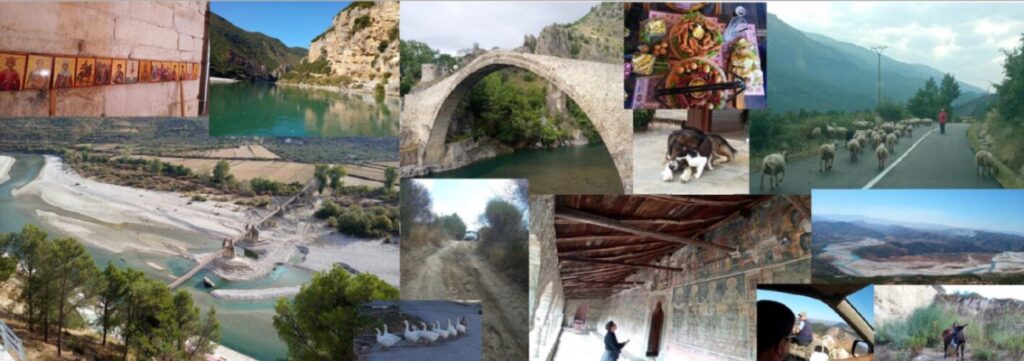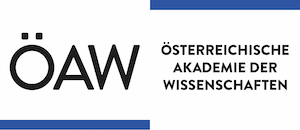ÖAW funded
interinstitutional interdisciplinary research initiative on the river Vjosa (Albania and Greece)
- Linguistic anthropological subproject: Conceptualizing the Own and the Foreign in the Aoos/Vjosa Valley
The Vjosa valley is a sparsely populated area in modern Albania and Greece with very few urban settlements. The demographic landscape is dominated by small-scale agricultural farming and pastoralism as well as contains several monastic communities in the south. The sparsity of urban structures in the Vjosa valley dates back to ancient times. Nevertheless, small communities ‒ sedentary, transhumant, and transient ‒ have been interacting with each other when using the river and its resources.
Apart from the fact that the ecology of a river valley provides conditions for the development of a different lifestyle and consequently a different culture than mountainous tributaries do, human mobility in the area results in perpetual cultural contact and exchange. The river serves concomitantly as the binding and the separating factor impacting social awareness and behavior.
Multiple local cultural paradigms found in communities scattered all over the largely pristine Vjosa area offer a unique research field in terms of the conceptualization of the ‘own’ and the ‘foreign’ in the Balkan context. The Vjosa functioning as a constant and simultaneously fluid and permeable boundary is the defining feature in the awareness and realization of the group affiliation and the respective identification of the ‘self’ vs. the ‘others’ by the people inhabiting the region.
It is common knowledge that language is though not the direct but the most conclusive way to access conceptual structures. Therefore, our analysis focuses primarily on the linguistic realization of the conceptual dichotomy described above and its varying contextual embedding. The Vjosa area is home to speech communities of Albanian, Greek, Aromanian, previously Slavic (visible in toponymy) and presumable Romani idioms. Socioeconomic and cultural contacts between them fostered linguistic interferences occurring within and across the linguistic boundaries. The resulting diversity of the linguistic expression provides an excellent projection surface of mental construals anchored in the framework of the ‘own’ – ‘foreign’ conceptual differentiation.
- Historical anthropological subproject: The Visual Memory Archive Aoos/Vjosa Valley
The project aims at comprehensive documentation of the Vjosa/Aoos habitat through photographic means by tracing its course from northwestern Greece to the Adriatic Sea. Simultaneously, we conduct ethnographic explorations of the Aoos/Vjosa valley and its tributaries—Lengarica, Lumica, Drinos, Bënça, Shushica—collecting and curating historical and contemporary photographic records. The visual database will be meticulously compiled from diverse sources, including private collections, vintage stores, libraries, archives, and the photographic collections of the Institute for Cultural Anthropology and Art Studies in Tirana. The collaborative effort involved in gathering these images enhances the depth and authenticity of the records.
The creation of the image database serves the preservation and showcasing the visual heritage of the cultural region of Vjosa/Aoos. Selected segments of the data will be integrated into the established Visual Archive Southeastern Europe (VASE), forming a comprehensive repository for the Aoos/Vjosa Valley and its adjacent cultural and natural landscapes. The repository should serve as a valuable resource for further research and is open access, thus, contributing to a deeper understanding of the region’s cultural and environmental dynamics.
Involved researchers:
Katsiaryna Ackermann, Joachim Matzinger, Robert Pichler, Nebi Bardhoshi



